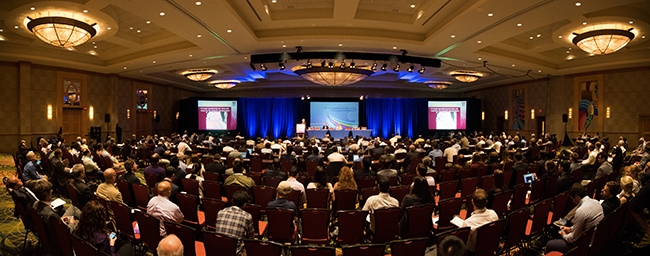The momentum at the Foundation’s 5th International Focused Ultrasound Symposium demonstrates the progression of the technology from a research tool toward a viable clinical treatment. From the record number of investigators attending, to the quantity and quality of clinical trials reported, to the celebration of the first FDA approvals of clinical brain and prostate systems, the meeting ushered in a new era.
The symposium featured more than 200 presentations, including updates on 15 clinical trials. Topics included the use of FUS for movement disorders, psychiatric disorders, brain tumors and other cancers, bone and soft tissue diseases, women’s health, cardiovascular conditions, and emerging applications. More than 400 people attended.

“Four different groups and companies approached me for new collaborations. You know how to get people excited about what is coming next, and have them think about what they can do now to accelerate the transfer to patients.”
In addition to the scientific presentations, the symposium hosted several special guests: John Grisham was interviewed on stage by CBS correspondent Chip Reid about his involvement with focused ultrasound and writing The Tumor; Cancer Moonshot Executive Director, Greg Simon inspired the audience to push the potential of FUS; and NIH Data Expert Philip Bourne spoke on the power of data sharing to propel medical breakthroughs.

Expanding our Reach
For the first time, we provided a live online feed for anyone around the world who could not travel to Bethesda but wanted to see key presentations. We had more than 500 people register, with an average of 70 viewers at each presentation throughout the week. Video recordings of the symposium presentations are available here.
In his closing remarks, Foundation Chairman Neal F. Kassell, MD, relayed his thoughts on accomplishing the goals of the meeting, stating “the symposium allowed attendees to make new friendships and renew old ones, share data, exchange ideas, and envision new projects—and was fun. It was truly a success.”
This Focus Feature provides highlights from the symposium. A complete scientific summary will be available later this year. All symposium abstracts are currently available online.
